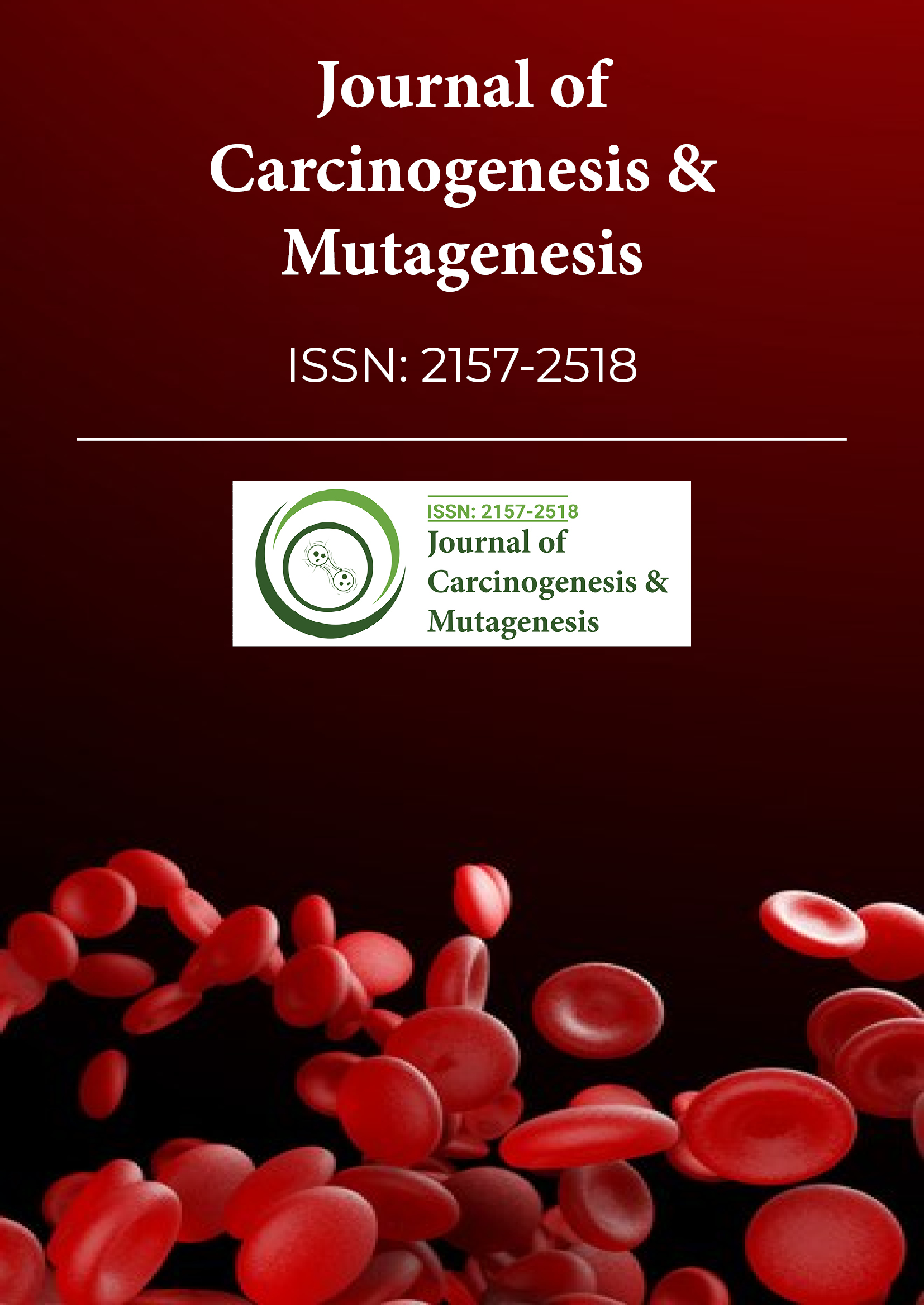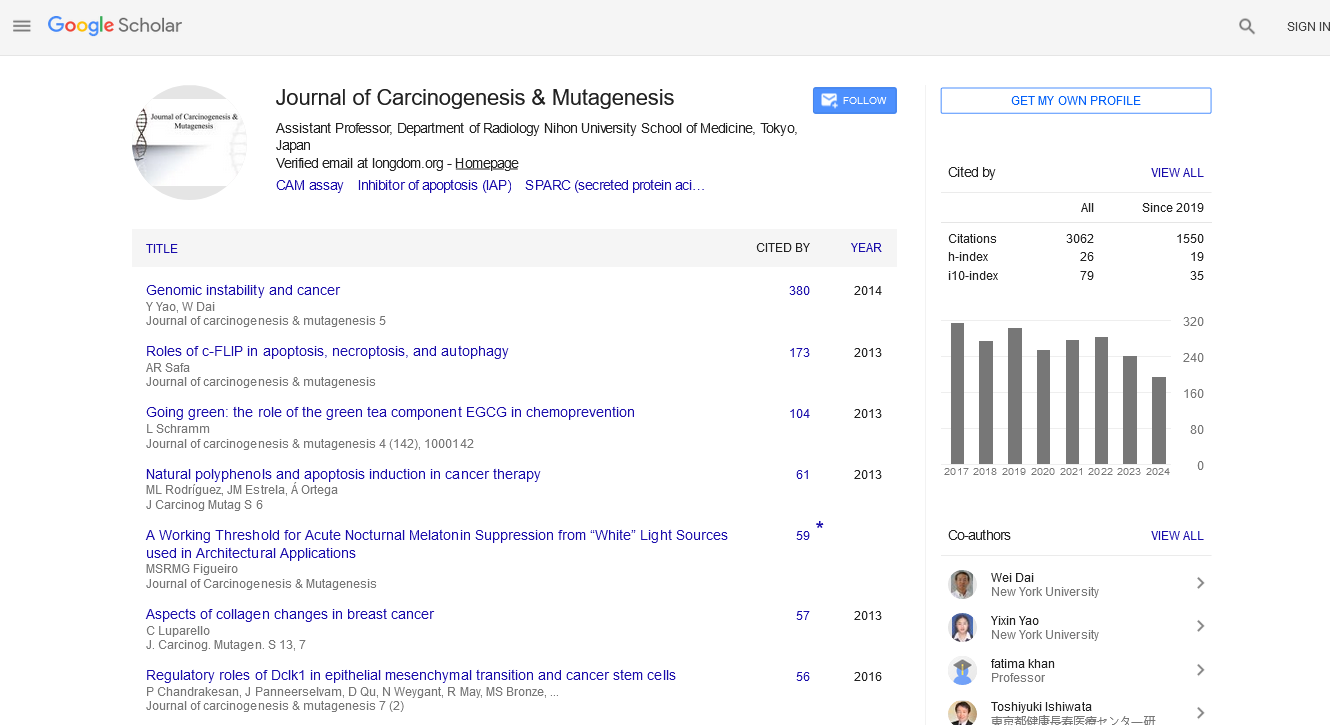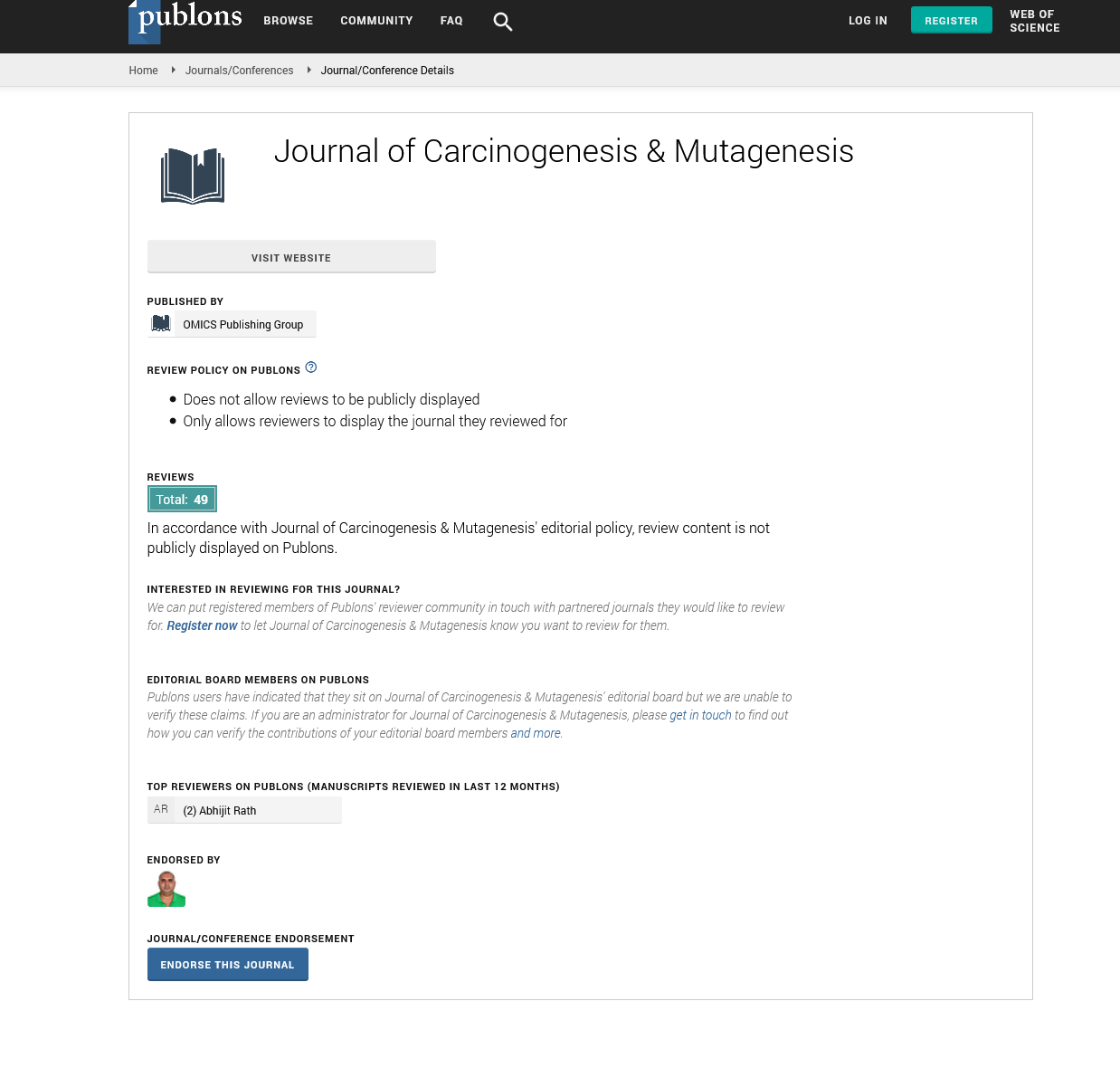Indexed In
- Open J Gate
- Genamics JournalSeek
- JournalTOCs
- Ulrich's Periodicals Directory
- RefSeek
- Hamdard University
- EBSCO A-Z
- OCLC- WorldCat
- Publons
- Geneva Foundation for Medical Education and Research
- Euro Pub
- Google Scholar
Useful Links
Share This Page
Journal Flyer

Open Access Journals
- Agri and Aquaculture
- Biochemistry
- Bioinformatics & Systems Biology
- Business & Management
- Chemistry
- Clinical Sciences
- Engineering
- Food & Nutrition
- General Science
- Genetics & Molecular Biology
- Immunology & Microbiology
- Medical Sciences
- Neuroscience & Psychology
- Nursing & Health Care
- Pharmaceutical Sciences
Commentary - (2023) Volume 0, Issue 0
Epigenetic and Advancements in Diffuse Intrinsic Pontine Glioma (DIPG) Therapy
Joya Chandra*Received: 25-Oct-2023, Manuscript No. JCM-23-24220; Editor assigned: 27-Oct-2023, Pre QC No. JCM-23-24220(PQ); Reviewed: 13-Nov-2023, QC No. JCM-23-24220; Revised: 20-Nov-2023, Manuscript No. JCM-23-24220(R); Published: 28-Nov-2023, DOI: 10.35248/2157-2518.23.S40.004
Description
Diffuse Intrinsic Pontine Glioma (DIPG) is a devastating and aggressive brain tumor that primarily affects children. Its location in the pons, a critical area of the brainstem, makes surgical intervention nearly impossible. Over the years, researchers have been striving to unravel the complexities of DIPG, developing models to gain insights into its biology and identify potential therapeutic strategies. In recent times, advancements in DIPG models have played a pivotal role in promoting our understanding of the tumor, showing potentail for improved treatment outcomes.
DIPG represents a formidable challenge in the field of pediatric oncology. It is characterized by its diffuse infiltration into the brainstem, rendering surgery impractical and limiting treatment options. The median survival for children diagnosed with DIPG is tragically short, emphasizing the urgent need for innovative approaches to tackle this aggressive tumor.
Creating accurate and representative models of DIPG is essential for studying its biology and testing potential treatments. Traditionally, researchers have utilized cell lines and animal models to mimic the disease in a controlled environment. These models allow scientists to investigate the underlying molecular mechanisms, identify biomarkers, and explore therapeutic interventions.
One approach involves the use of DIPG cell lines cultured in the laboratory. These cells, derived from DIPG tumors, provide a platform for researchers to study the tumor's behavior and response to various treatments. While cell line models offer a controlled setting for experimentation, they have limitations in fully capturing the complexity of the tumor microenvironment.
Mouse models, particularly patient-derived xenografts (PDX), involve implanting human DIPG cells into mice. This model more accurately replicates the human tumor microenvironment, allowing researchers to observe how DIPG progresses and responds to treatments in a living system. Advances in genetic engineering have also led to the development of Genetically Engineered Mouse Models (GEMMs), providing a more sophisticated tool for studying DIPG.
Recent studies using advanced DIPG models have revealed valuable insights into the molecular and genetic features of the tumor, prepare for targeted therapies. Researchers have identified specific mutations and alterations in genes such as H3K27M, which is prevalent in DIPG. Understanding these genetic abnormalities allows for the development of targeted therapies designed to interrupt the specific pathways driving tumor growth.
Epigenetic modifications, such as histone mutations in H3K27M, play an important role in DIPG development. DIPG models have enabled researchers to explore therapies targeting these epigenetic alterations. Epigenetic modifiers and histone deacetylase inhibitors are among the potential treatment options currently under investigation.
Immunotherapy, separate out the body's immune system to target and destroy cancer cells, has emerged as a potential avenue in DIPG research. DIPG models have facilitated the testing of immunotherapeutic approaches, including checkpoint inhibitors and Chimeric Antigen Receptor (CAR) T-cell therapies. These strategies aim to enhance the immune system's ability to recognize and eliminate DIPG cells.
DIPG models have become invaluable tools for drug screening, allowing researchers to identify compounds that show efficacy against the tumor. Furthermore, these models support the concept of personalized medicine, altering treatments based on the unique genetic profile of each patient's DIPG.
While advancements in DIPG models offer optimism, challenges persist. The heterogeneity of DIPG tumors and the intricate interplay of genetic and epigenetic factors contribute to the complexity of finding effective treatments. Additionally, translating potential findings from preclinical models to clinical success remains a formidable task.
Enhancing the accuracy of DIPG models to better reflect the tumor's heterogeneity and microenvironment is important.
Incorporating technologies such as organoids, three-dimensional cell cultures that mimic the architecture of tumors more closely, could provide a more representative platform for experimentation.
Collaboration among researchers, clinicians, and pharmaceutical companies is essential for advancing DIPG research. Shared databases, standardized protocols, and open communication will facilitate the acceleration of discoveries and the translation of preclinical findings into clinical trials.
Transitioning from preclinical models to clinical trials requires a thorough understanding of the genetic and molecular characteristics of individual DIPG cases. Patient stratification based on these factors is essential for identifying subgroups that may respond differently to specific treatments, guiding the design of more targeted and effective clinical trials.
The past year has witnessed significant strides in the development of Diffuse Intrinsic Pontine Glioma models, providing researchers with valuable tools to unravel the complexities of this devastating pediatric brain tumor. With continued collaboration, innovation, and a commitment to translating research findings into detectable clinical outcomes, the next year will bring us closer to effective treatments and, ultimately, improved survival rates for children facing the challenge of DIPG.
Citation: Chandra J (2023) Epigenetic and Advancements in Diffuse Intrinsic Pontine Glioma (DIPG) Therapy. J Carcinog Mutagen. S40:004.
Copyright: © 2023 Chandra J. This is an open-access article distributed under the terms of the Creative Commons Attribution License, which permits unrestricted use, distribution, and reproduction in any medium, provided the original author and source are credited.


